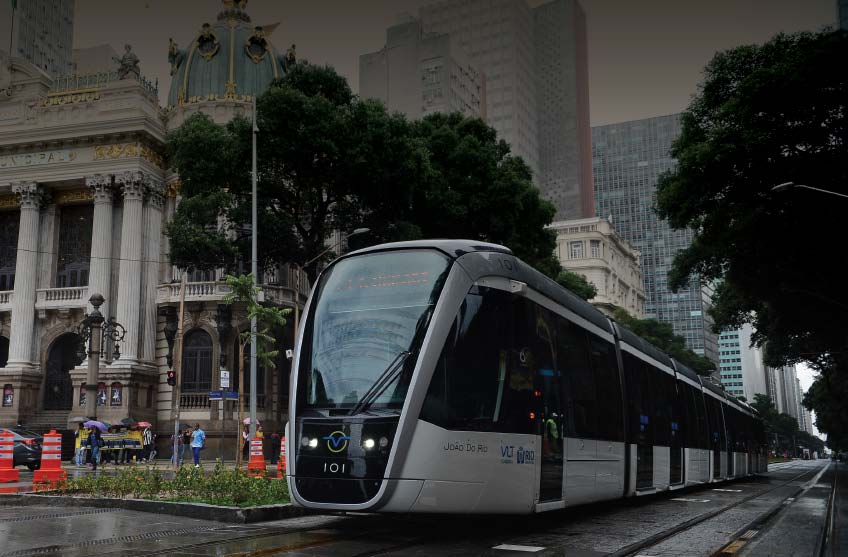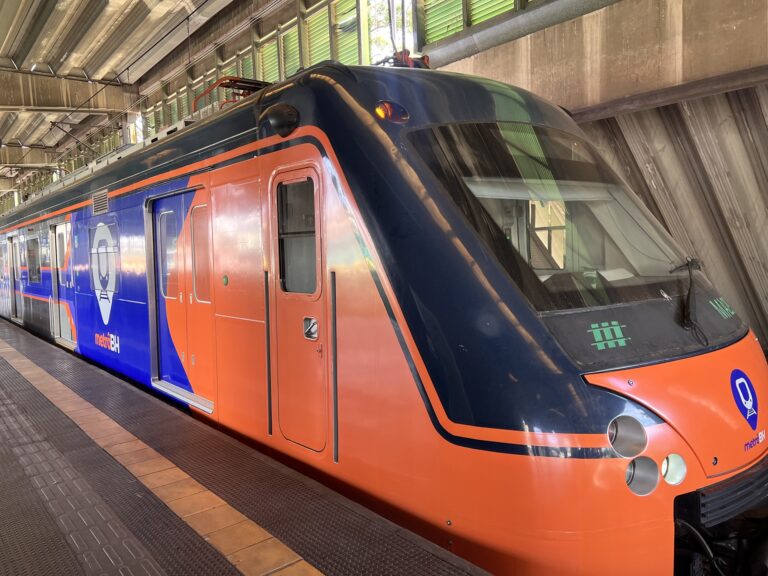The figures show that public rail passenger transport systems have expanded in Brazil in this decade between 2010 and 2018. But it should be noted that this growth is still relatively small and remains concentrated in a few metropolitan areas of the country.
Currently, the distribution of the urban and metropolitan rails is uneven and is far from reaching all the main centers of Brazil, according to information from the National Association of Railroad Passenger Carriers (ANPTrilhos) for 2018.
The state of São Paulo has 33,8% of the urban rail network and Rio de Janeiro with 25.9%. The remaining 40.3% are distributed by systems in operation in the following Federal Units: Ceará –
7.5%; Pernambuco – 6.5%; Rio Grande do Norte – 5.1%; Bahia – 4.2%; Rio Grande do Sul – 4%;
3.5%; Alagoas – 3.1%; Paraíba – 2.7%; Minas Gerais – 2.5%, and Piauí – 1.2%.
For the rail and subway sector, including operators and industry, and for the government itself, it is necessary to create effective conditions for the rails to have a greater presence in large and medium-sized cities and become effective systems for structuring public transport, helping to integrate, organize and to give greater efficiency to the urban displacements. Also gaining strength is the idea of resuming the inter-urban connection by trains, practically nonexistent
in Brazil in the last decades.
Taken as a whole, the rail transportation sector in Brazilian cities has expanded throughout this decade. The table (on page 35) shows that, with the exception of the extension of the network, which has evolved timidly, all other indicators have shown a reasonable growth in the last nine years.
To a large extent, this expansion is explained by the persistence of an investment policy of the São Paulo government, which since the 1990s has sought to expand the still small subway network of the country’s largest city and to requalify the centennial train network that serves the Metropolitan Region of São Paulo, with 260 kilometers in 22 municipalities.
The Source-Destination Survey of the São Paulo Metropolitan Region, whose data were published in December 2018, detected a great increase in the use of rails as the main mode of transportation between 2007 and 2017. There was a 53% increase in the number of subway journeys (from 2.2 million to 3.4 million daily trips), and 55% in the number of trips on the Companhia Paulista de Trens Metropolitanos (CPTM) trains, from 800 thousand to 1.3 million per day.
In 2007, there were four subway lines in the city of São Paulo, totaling 61.3 kilometers and 55 stations, with 885 million passengers being transported during that year; in 2017, there were fi ve lines, totaling 71.5 kilometers, 64 stations, and the number of passengers reached 1.1 billion in the year. The system closed 2018 with 96 kilometers of extension and 84 stations; this expansion process has included, since 2010, the implementation of Line 4 – Yellow, the complementation of Line 5 – Lilás, which now has 20 kilometers of extension, and the partial implantation of Line 15 – Silver, in monorail.
Line 6 – Orange started to be built, but is paralyzed due to the lack of conditions of the winning bidding consortium. The construction of Line 17 – Gold, also in monorail, is also stopped.
There was ample requalification of the infrastructure of Companhia Paulista de Trens Metropolitanos (CPTM).
From 2007 to 2017, CPTM remained with 260.8 kilometers of rails and 92 stations (136.5 kilometers of network and 46 stations in the city of São Paulo); the number of passengers transported annually increased from 465 million to 827 million in the period. In 2018, Line 13 – Jade was inaugurated, adding another 8.7 kilometers of line and new stations to the system, and providing interconnection with the international airport of Guarulhos.
Another state-owned company from São Paulo, the Metropolitan Urban Transport Company (EMTU) was responsible for implementing the first stretch of the VLT system in the Baixada Santista, linking São Vicente to Santos, with 11.5 kilometers and 15 stations. The second stretch, with a planned deployment soon, will be eight kilometers long with 14 stations.
The expansion of urban trails has also benefited from the momentum brought
about by major events throughout the decade, especially those of a sports nature, such as the FIFA World Cup in 2014 and the Olympic Games in Rio de Janeiro in 2016. Rio de Janeiro won Line 4 – Gray, between Ipanema and Barra da Tijuca, with 16 kilometers of length, and VLT Carioca, in the central area of the city, with three lines, totaling 28 kilometers.
In Ceará, three systems came into operation during the decade: the VLT Parangaba-Mucuripe, with 10.28 kilometers, in Fortaleza; the Cariri VLT, between the cities of Juazeiro do Norte and
Crato, with 13.6 kilometers, and Sobral’s VLT, with 13.9 kilometers, and also the requalification of the two surface subway lines in the state capital. The Natal, João Pessoa and Maceió trains, of the Brazilian Company of Urban Trains (CBTU), were transformed into VLT systems. The single line of the Trensurb system, which has the initial station in the center of Porto Alegre received 9.3 kilometers more, reaching the city of Novo Hamburgo.
Another impact was recorded in Salvador, capital of Bahia, with the start of operation in 2014 of the subway system, which now has two lines, totaling 33 kilometers and 20 stations. In the
Bahian capital there was also a bidding and signing of a contract to replace the suburban train line that runs along Todos Santos Bay by a monorail system.
In the coming years, how much transport on rails can grow in Brazil? In a way, the national secretary for Mobility and Urban Services of the Ministry of Regional Development, Jean Carlos Pejo, answered this question, saying that he expects to see the railway operators jump from 600 million tons per year to one billion tons after the renewal of concessions.
He also said he wanted to see the urban systems, which today carry 10.9 million passengers per day, reach the level of 15 million passengers per day; in this case, the strategy – it is possible to deduce – would be to extend urban systems on rails, especially those with lower cost of deployment and capable of meeting the needs of medium and large cities such as VLT systems.
Click here and see the report in PDF.
TECHNIBUS | UITP 2019




